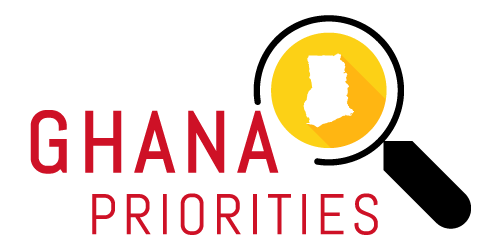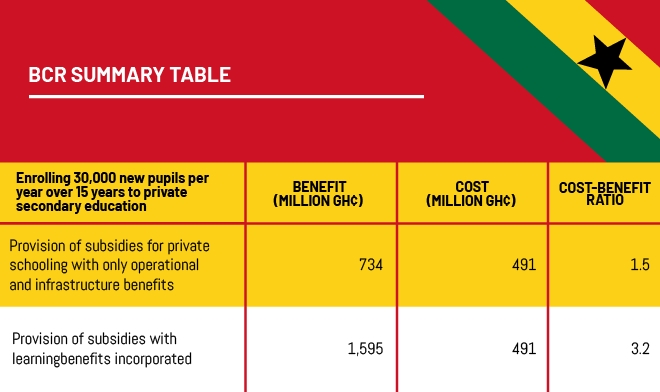Ghana Priorities: Education (SHS)
Technical Report
The Problem
Although the free senior high school (SHS) policy has greatly increased enrolment, it has led to a mismatch in the demand for secondary education and the available educational infrastructure. The double-track system was introduced to circumvent this hurdle.
However, the double-track system has its own challenges and could worsen the academic performance of students and deplete the existing educational infrastructure (Takyi et al., 2019; Graves et al., 2018). The Government of Ghana is committed to ending the double-track system and has raised billions of cedis in capital to pay for the infrastructure.
Intervention: Provision of government subsidies to 30,000 pupils per year to attend private SHS
Overview
This intervention involves paying the cost of non-boarding private secondary education in the form of subsidies to pupils for them to attend private SHS. The target is set at 30,000 pupils per year.
Implementation considerations
This intervention would require negotiating with private schools. Some communication to the public would also be required to explain the new approach. To keep costs down, the intervention would only subsidize children who went through the public placement system but could not secure a spot (as opposed to parents who purposefully chose private schools).
Cost and Benefits
Costs
The total cost of implementation is GHc491m over 15 years (at an 8% discount rate), mostly for the cost of subsidies. There is a small amount of negotiation and administration costs.
Benefits
The intervention would ameliorate the need to build approximately 50 public schools saving the government GHc 250m. It would also avoid operating costs of GHc 58.5m per year or 484m over the time period. The total benefits are GHc 734m and the BCR is 1.5.
Key Takeaways
- The government offers a spot to pupils who wanted to be placed in public schools, but instead places them in private schools and offers subsidies to them to attend private school. The subsidies cover all variable costs of schooling a child in private school - teacher salary, maintenance, operations, etc. For every cedi given out as subsidy, 1.5 cedis is returned in savings from avoided infrastructure and school operations costs.
- This would save GHc 250m in infrastructure that could instead be used for other purposes.


